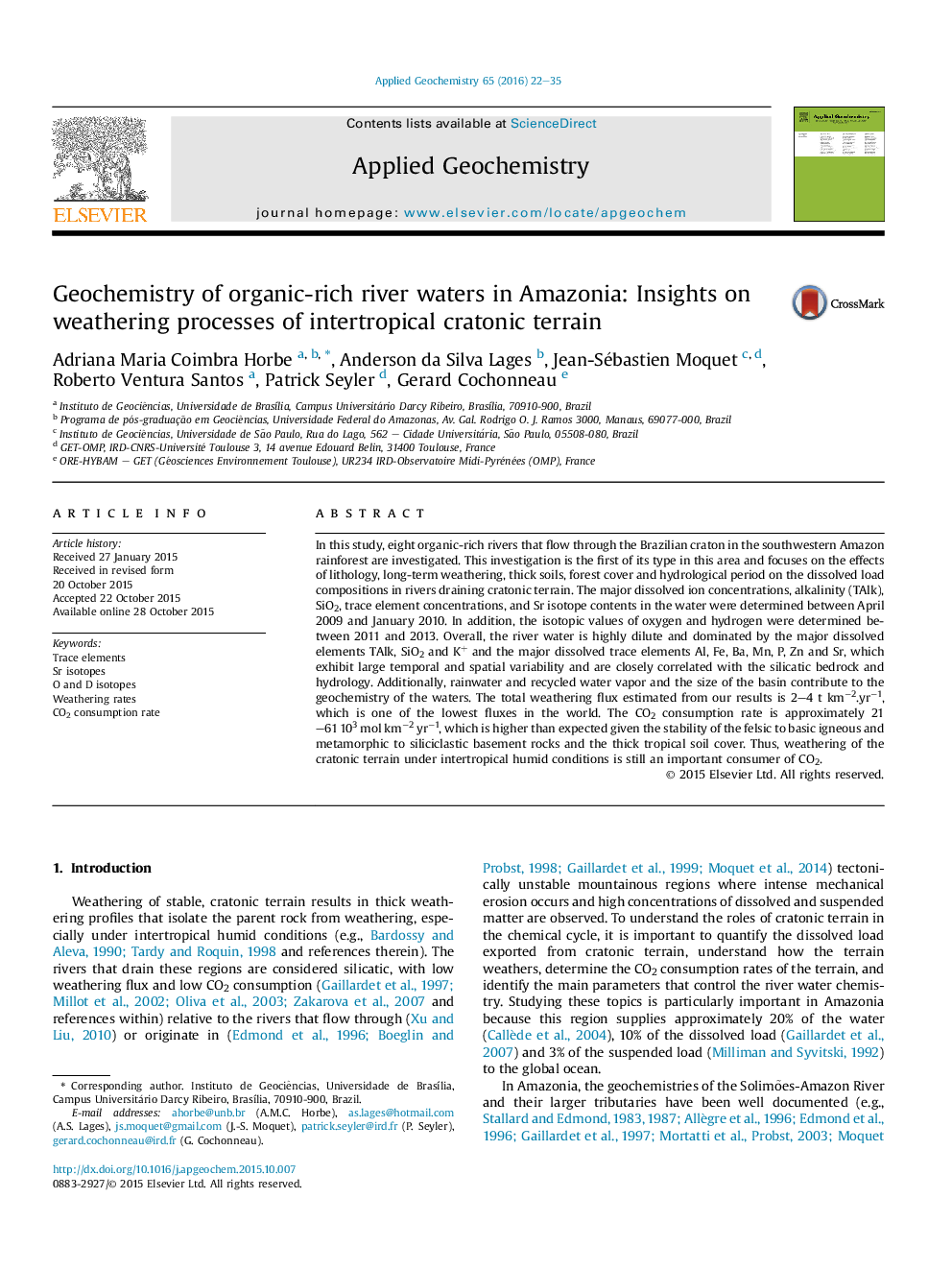| کد مقاله | کد نشریه | سال انتشار | مقاله انگلیسی | نسخه تمام متن |
|---|---|---|---|---|
| 4435587 | 1620226 | 2016 | 14 صفحه PDF | دانلود رایگان |
• Were studied rivers flowing the Brazilian craton covered by lateritic soils.
• The river waters are highly diluted and dominated by TAlk, SiO2 and K+.
• There is spatial and temporal variability in the chemical composition.
• The rain amount and recycled water vapor affect the O and D isotopes.
• Geology, weathering, discharge and seasonality highlight a singular composition.
In this study, eight organic-rich rivers that flow through the Brazilian craton in the southwestern Amazon rainforest are investigated. This investigation is the first of its type in this area and focuses on the effects of lithology, long-term weathering, thick soils, forest cover and hydrological period on the dissolved load compositions in rivers draining cratonic terrain. The major dissolved ion concentrations, alkalinity (TAlk), SiO2, trace element concentrations, and Sr isotope contents in the water were determined between April 2009 and January 2010. In addition, the isotopic values of oxygen and hydrogen were determined between 2011 and 2013. Overall, the river water is highly dilute and dominated by the major dissolved elements TAlk, SiO2 and K+ and the major dissolved trace elements Al, Fe, Ba, Mn, P, Zn and Sr, which exhibit large temporal and spatial variability and are closely correlated with the silicatic bedrock and hydrology. Additionally, rainwater and recycled water vapor and the size of the basin contribute to the geochemistry of the waters. The total weathering flux estimated from our results is 2–4 t km−2.yr−1, which is one of the lowest fluxes in the world. The CO2 consumption rate is approximately 21–61 103 mol km−2 yr−1, which is higher than expected given the stability of the felsic to basic igneous and metamorphic to siliciclastic basement rocks and the thick tropical soil cover. Thus, weathering of the cratonic terrain under intertropical humid conditions is still an important consumer of CO2.
Journal: Applied Geochemistry - Volume 65, February 2016, Pages 22–35
